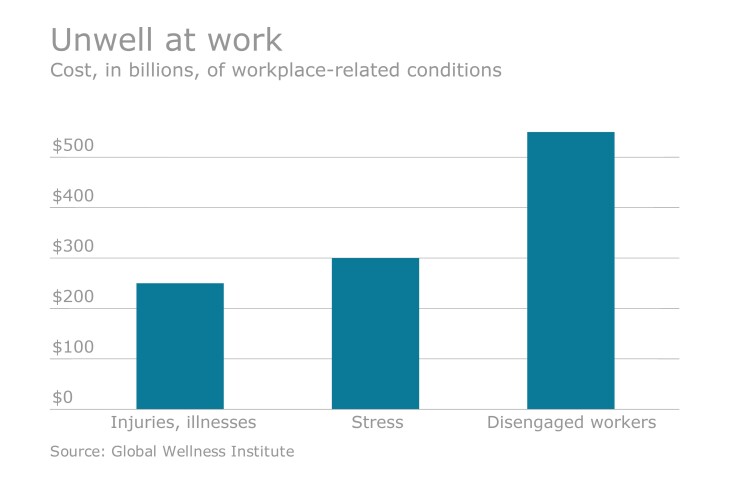As employers work to bridge the gap between healthcare spending and the business value derived from a healthy workforce, many are beginning to ask advisers more about population health management solutions to quantify their approach.

“Employers spend a lot of money [on health benefits] and it’s not always clear what value they’re getting, or if they’re getting the right care from the right people,” says Dr. Paul Taylor, CMIO and co-founder of Wellcentive, an Alpharetta, GA-based healthcare company that specializes in value-based care approaches.
“We hear ‘wellness’ thrown around a lot, and ‘chronic disease management,’” Taylor, an internist, says. “Keeping people healthy is important.”
The chief drivers of cost in any healthcare plan are the sickest patients in the pool. Population health management strategies involve anticipating the needs of those employees who use the most resources in between visits to the doctor, and automating processes to manage their treatment plans.
“You’re more proactive about improving the care that’s delivered in between those visits,” Taylor says. “Care management is definitely a population health management workflow; it involves a physician, care manager, and a pharmacist, and they rally around the sickest patients.”
Neil Godbey, chairman and CEO of Advanced Plan for Health (APH), says population health management strategies can actually help predict significant health events among patient populations six to 12 months in advance. By using a blend of data, Poindexter, an APH software engine, can identify neurological, cardiac, or behavioral events, and can help modify patient behaviors to preempt them. The software also is intended to help patients without chronic health conditions participate in wellness programs or copay/premium reductions by staying healthy. Some employers are willing to put their entire deductibles on the line for employees who meet those plan structures.
“As a doctor you’re taught to treat people in their illnesses,” Godbey says. “You’re not taught how to see the data and manage people. Doctors continue to treat episodic events. There isn’t a lot of time nor is the reimbursement system geared to managing your patient.”
By incentivizing healthcare providers as well as patients, population health management strategies can help employers absorb unexpected costs by paying for performance or paying to avoid risk. Either approach is focused on influencing patient behaviors and driving better health outcomes.
Some plans encourage preventive care with a lower premium for annual visits; others may reward employees who quit smoking or stay tobacco-free. Some provide free medication or supplies for patients managing chronic conditions. Almost all such arrangements incentivize visits to high-quality providers by offering lower copays or out-of-pocket costs.
“There’s a lot of variability out there with respect to payers and how engaged they are with this towards a risk-bearing reimbursement model,” Taylor says. “Developing relationships with providers is really key.”
Godbey says that the bulk of the shift in value-based care strategies like population health management will also have to come from helping employees view themselves as consumers in a healthcare system with empowering choices rather than patients who are ill and in need of treatment.
“Since it’s difficult to move the medical profession from treatment philosophy to management philosophy, it’s easier to move the population to a consumer status versus a patient status,” Godbey says. “But that means that benefits and everything else have to come and follow that to encourage them. Most of the structures that are out there are built around making us all patients.”





